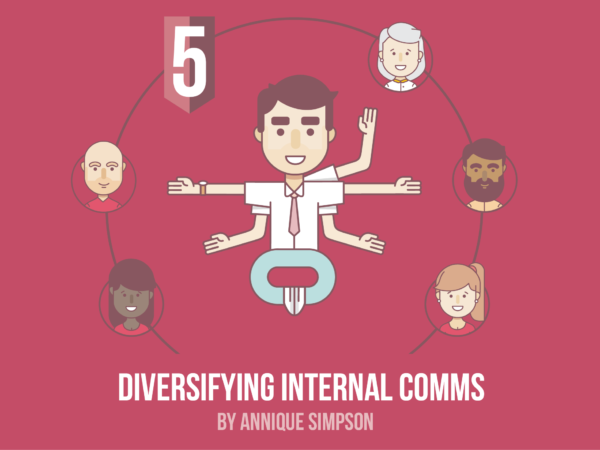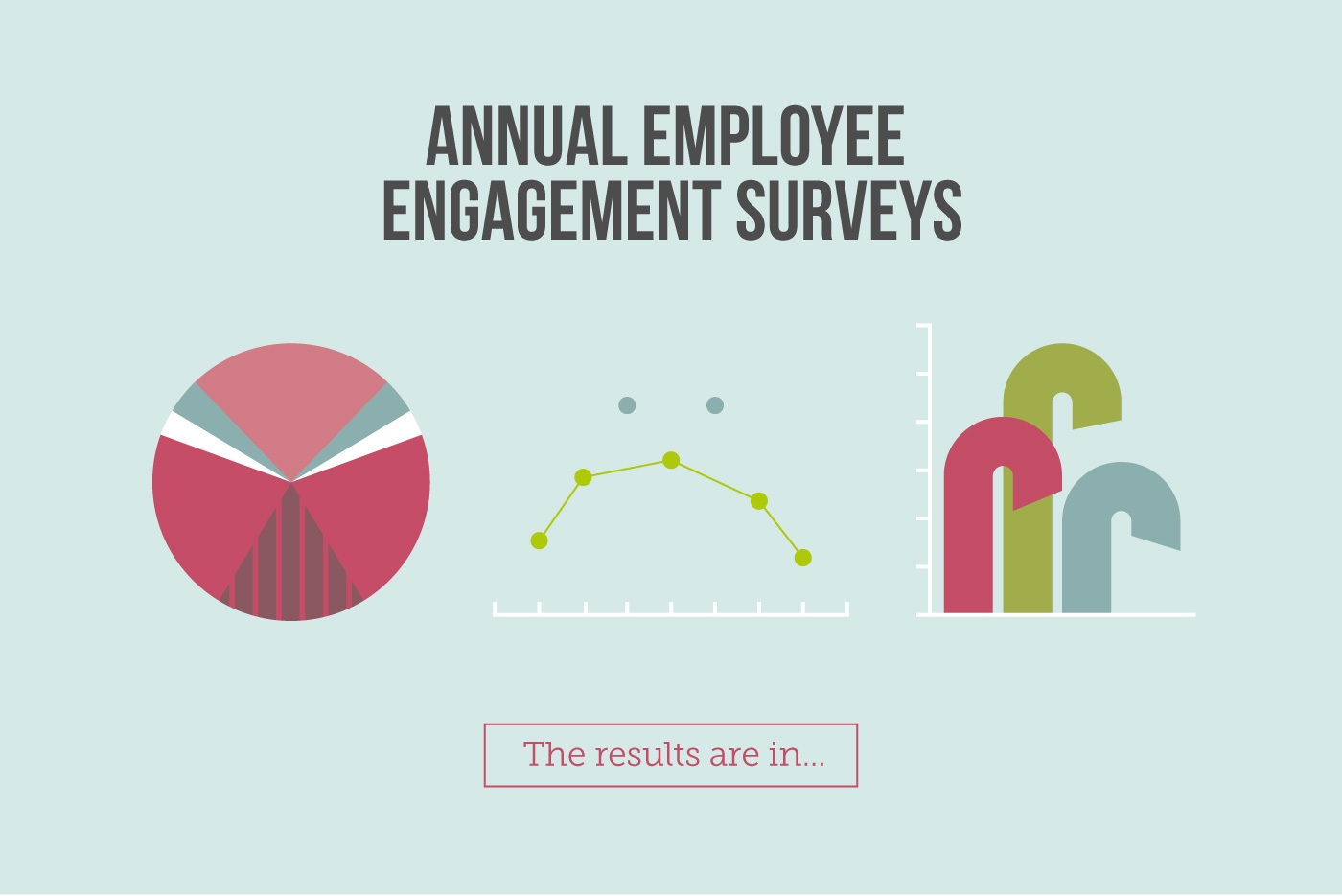
Employee engagement and internal comms aficionado Caitlin Kirwan joins our blog to talk annual engagement surveys – and why they may be damaging your perception of the level of engagement in your organisation.
I have mixed feelings about the concept of annual employee engagement surveys.
On the plus side, holding an annual survey presents a great opportunity to shine a spotlight on employee engagement, and get managers across the business thinking about what they could be doing differently. And analysing the results with the board of directors helps to make engagement a priority – highlighting how actions taken by senior management directly impact the satisfaction, engagement, and ultimately the productivity of employees.
However, there is also a significant downside.
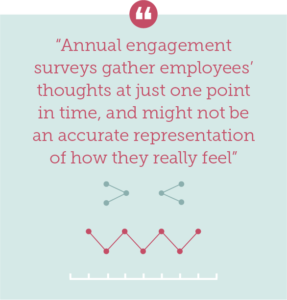 In my opinion, the results of annual employee engagement surveys should be taken with a pinch of salt. These surveys gather the thoughts of employees at just one point in time, and subsequently might not be an accurate representation of how they really feel.
In my opinion, the results of annual employee engagement surveys should be taken with a pinch of salt. These surveys gather the thoughts of employees at just one point in time, and subsequently might not be an accurate representation of how they really feel.
Imagine the following scenario – an employee could have been late to work due to dreadful traffic, then had a call with a particularly difficult customer, then been asked by their manager to pick up another difficult project, and then decide fill in the survey. After that kind of morning, they’re not going to be in the right head-space to provide balanced and representative feedback. Is this really the one and only time you want to ask that employee for their thoughts?
Influencing employee engagement surveys from the top
Furthermore, team leaders and people-managers might be reluctant to give honest answers that paint the real picture of employee engagement if they think the results may reflect badly upon them as a leader. I myself have witnessed unrealistically positive results in areas within organisations that I know are actually far from perfect.
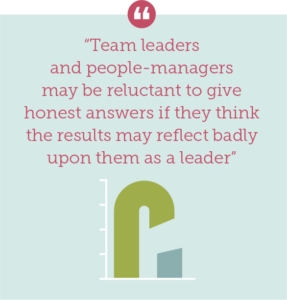 When the results are broken down, managers are commonly responding drastically more optimistically than the broader non-managerial population. Nobody wants it to look as though they’re not doing a good job, and an already-stretched manager might be keen to avoid a long list of further actions.
When the results are broken down, managers are commonly responding drastically more optimistically than the broader non-managerial population. Nobody wants it to look as though they’re not doing a good job, and an already-stretched manager might be keen to avoid a long list of further actions.
Similarly, a people-manager who is worried about the results of their team is unlikely to encourage employee participation in the survey, impacting negatively on the overall response rates and skewing your results.
Having worked in several organisations going through significant periods of change, I do not underestimate the importance of regularly reaching out to employees to understand their thoughts, feeling or concerns. An annual employee engagement survey is one way to do this… but it cannot be a standalone activity if you want truthful, accurate information.
Alternative ways to measure employee engagement
Continual measurement is key. If you truly want to temperature-check employee engagement levels, you need to be constantly gathering feedback and asking how your organisation is doing.
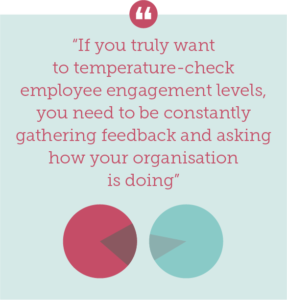 You can collect much more valuable data and insights through activities such as focus groups, 1:1 discussions, coffee mornings with senior management or open forums/discussion areas on your intranet. Need hard data? Then why not add a weekly poll to the homepage of your intranet, or station voting buttons in your reception?
You can collect much more valuable data and insights through activities such as focus groups, 1:1 discussions, coffee mornings with senior management or open forums/discussion areas on your intranet. Need hard data? Then why not add a weekly poll to the homepage of your intranet, or station voting buttons in your reception?
Ask your people how they’re feeling regularly. Ask them if they’re motivated to go ‘above and beyond’ more than just once a year, and ask them if they feel aligned with your company goals and objectives. These questions need to be asked on a recurring basis, and the cumulative data should be continually compiled to paint an accurate picture over a period of time.
I’m not saying that employee engagement surveys are fundamentally bad… just that they need to be more regular, flexible and responsive.
Meet the author

Caitlin Kirwan
I am responsible for all internal communication and employee engagement activity across DAS UK Group. I have previously managed internal communications for a range of companies across multiple sectors, tackling multiple communication and engagement challenges.
Looking to get your employees invested in your organisation’s messages?
We create integrated internal comms campaigns that put your employees at the heart of the story – building engagement and commitment that lasts. Drop us a line today to find out what we can do for you!
Got a brilliant idea you simply can’t keep to yourself?
We’re always looking for fresh faces to help us further the IC conversation by writing guest articles for our blog. If you want to make your voice heard on internal comms, employee engagement, change management or leadership development, we’d love it if you got in touch!





